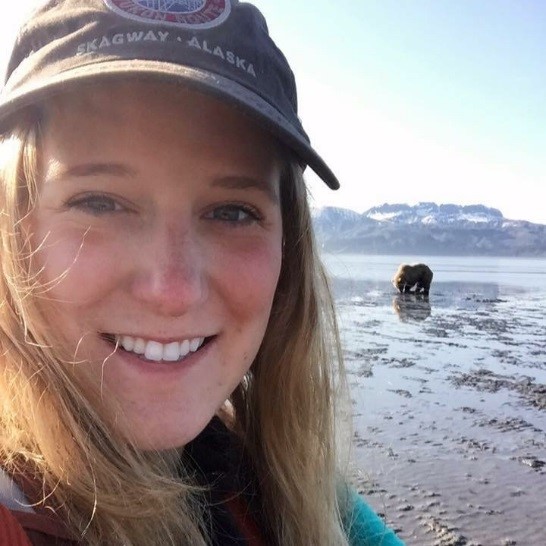Related Academic Courses
The Resilience Institute is closely tied with the Environmental Studies Department degree programs:
- Disaster Risk Reduction minor
- Environmental Studies -- Justice and Community Resilience Emphasis, BA
Four core courses related to natural hazards and community resilience are integral to these degree programs.
Emergency Response Training.
ENVS 362 U.S. Disaster Policy
This course provides a broad introduction to U.S. disaster policies and practices, with some exploration of these themes outside of the U.S. Students explore how state and federal U.S. disaster policies have exacerbated the impacts from natural and technological hazards on marginalized communities. Students apply their learning by participating in training and/or outreach activities of local emergency management and response organizations.
ENVS 372 Hazards Mitigation Planning
This interdisciplinary course emphasizes creation of safer human settlements through application of hazard mitigation strategies in community planning, site selection and layout, infrastructure design, and building design. The course provides a survey of meteorological and geological hazards and discusses the mandates and responsibilities of various levels of government. It integrates insights from environmental design disciplines for minimizing losses from natural hazards such as global warming, severe storms, wildfires, flooding, earthquakes, and landslides. Students obtain an introductory knowledge of routine planning, design, engineering and public policy tools for reducing losses from natural hazards, and facilitating suitable post-disaster redevelopment. Students gain hands-on experience through projects assessing existing mitigation plans, researching case studies, and working in teams to develop natural hazard mitigation strategies for jurisdictions at risk.
ENVS 465 Disaster Risk Reduction
In this course students examine the socio-political and historical causes of disasters and how these events result in unjust outcomes, with an emphasis on international contexts. Students study sources of social vulnerability and resilience, thematically and geographically, and explore strategies for disaster risk reduction. While this course is required for those pursuing the Disaster Risk Reduction minor, it may also be of interest for students interested in environmental justice, sustainability, geography, community development, and urban planning.
ENVS 476 Disaster Reduction and Emergency Planning Studio

Director of Environmental Protection
as part of class project.
The course provides students with an opportunity to apply their knowledge and skills in disaster reduction and emergency planning, with an emphasis on community-based approaches. Students will work in groups with a client (or clients) on a quarter-long project of practical significance. Students will be exposed to best practices through case studies across disaster reduction and emergency planning. Project management, client interactions, report writing, and communicating technical information to diverse audiences will be emphasized.
What Graduates Do with a Disaster Risk Reduction Minor
 Anthony Vendetti
Anthony Vendetti
After graduating from the DRR program, Anthony spent three years in AmeriCorps working in multiple capacities including wilderness firefighting, emergency planning, and small business resilience. Upon completion of his third year, Anthony moved to New Orleans where he obtained his M.S. in Disaster Resilience Leadership from Tulane University. While in New Orleans, He was also a member of the Executive Leadership Committee for Evacuteer, an organization created to recruit, train, and facilitate the volunteer manpower behind large-scale evacuations. After working as an emergency management consultant for Integrated Solutions Consulting, Anthony became Clark County's Emergency Management Coordinator.
 Chantal Wikstrom
Chantal Wikstrom
After graduating from Huxley in 2013 Chantal traveled to Zambia to serve as a Peace Corps volunteer in the agriculture and forestry program. She worked with smallholder farmers in identifying and implementing solutions affecting household income, food security, deforestation, health and community-wide development. She has also been partnering with the U.S. Forest Service’s International Program to develop and implement a community-based reforestation project. In 2016, she extended her service to work on the Global Climate Change Initiative with USAID’s Feed the Future program. Returning to the United States, Chantal began working with the Organ Health Authority as their Drinking Water Technical Services & Emergency Preparedness Coordinator.
 Sarah (Oishi) LaVelle
Sarah (Oishi) LaVelle
After Sarah graduated she worked as an independent GIS contractor, joined AmeriCorps to work with the City of Everett Office of Emergency Management (OEM), and then supported FEMA’s Individual and Community Preparedness Division as a contractor in their Region X office. After working with FEMA, she returned to Everett OEM and is now the Emergency Planning and Operations Coordinator. Sarah manages and maintains the City’s Emergency Operations Center and engages the City departments and their external partners in planning for disaster preparedness, mitigation, response, and recovery.
 Jonathan Loewus-Deitch
Jonathan Loewus-Deitch
Jonathan was part of the first batch of 2009 graduates from the Disaster Reduction and Emergency Planning (DREP) track and an intern during the early days of the Resilience Institute. The skills he gained in GIS, survey design, data collection and analysis and technical writing gave him a foundation to develop a career at American Red Cross National Headquarters as a an information and data management professional. At Red Cross he built out disaster readiness and capacity development initiatives, foundational disaster program guidance and handbooks, and pushed the Red Cross disaster program toward improved data analysis and data sharing. He also worked on several major disasters: Hurricane Sandy, tornado events, and the 2015 Nepal earthquake. After leaving the Red Cross, Jon took a position as Knowledge and Information Management Officer for Global Fund for Children for a year and then began working as a senior data analyst for Universal Service Administrative Co. in Washington, D.C.
 Pam (Griswold) Hanson
Pam (Griswold) Hanson
The summer after graduation, Pam was hired by the King County Office of Emergency Management (KCOEM) as an AmeriCorps Assistant. She spent the next 10 months building a strong portfolio of hands-on emergency management experience while living off of a modest monthly stipend. When her AmeriCorps term was up, she was hired on full-time as KCOEM's Training and Exercise Coordinator. During her time at the county, she worked with emergency management partners in local, county, state, tribal and federal governments to plan for a large-scale earthquake exercise occurring in June 2016. In the fall of 2015, she began working with the City of Bellevue Office of Emergency Management on training for their Emergency Operations Center. Pam finds joy in working with others to create more resilient communities and is excited about bringing her skills to the city level.
 Anthony Vendetti
Anthony Vendetti Sarah (Oishi) LaVelle
Sarah (Oishi) LaVelle Pam (Griswold) Hanson
Pam (Griswold) Hanson